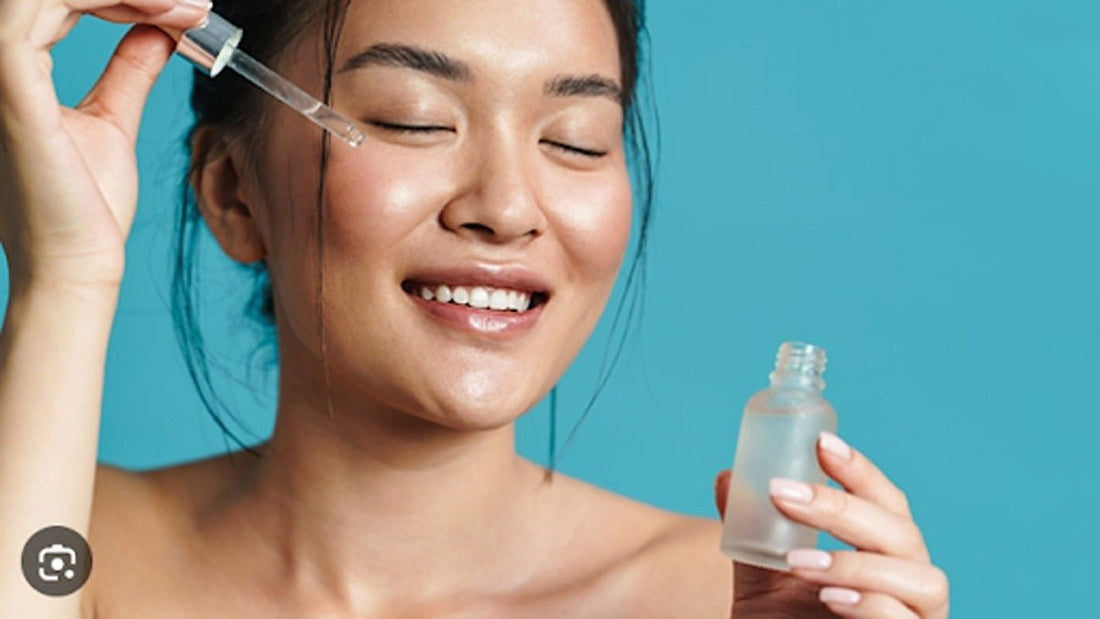
Niacinamide 101: Benefits, Uses & Side Effects
If you’ve spent even five minutes in the skincare world, you’ve probably heard people raving about niacinamide. And honestly? The hype is totally justified. This multitasking ingredient does it all—fights acne, minimizes pores, strengthens your skin barrier, and even smooths fine lines. The best part? It’s gentle enough for almost every skin type.
But what exactly is niacinamide, and how do you use it without turning your skincare routine into a science experiment? Let’s break it down.
What Is Niacinamide?
Niacinamide (aka vitamin B3) is a water-soluble vitamin that your skin loves. It helps regulate oil production, evens out skin tone, and strengthens your skin barrier—which is basically your skin’s first line of defense against dryness, pollution, and irritation.
It’s one of the most versatile skincare ingredients out there, making it a must-have whether you’re dealing with breakouts, dullness, or fine lines.
Want to see how niacinamide compares to other powerhouse ingredients? Check out The Science of Active Ingredients: Niacinamide, Vitamin C & Hyaluronic Acid for a deeper dive.
Why Your Skin Will Love Niacinamide
Here’s why dermatologists, skincare lovers, and beauty brands can’t get enough of niacinamide:
1. Controls Oil Without Drying You Out
If your skin can’t decide between oily and dry, niacinamide helps balance things out by regulating sebum (oil) production. Translation: less shine, fewer clogged pores, and a smoother texture.
2. Makes Pores Look Smaller
No, it won’t erase your pores (nothing will, sorry!), but it does tighten and refine them over time, making your skin look smoother and more even.
3. Fights Acne & Soothes Breakouts
Niacinamide has anti-inflammatory properties, meaning it calms down angry, red pimples without irritating your skin like some harsh acne treatments do. It also helps prevent future breakouts by keeping excess oil in check.
Struggling with acne scars too? Read Niacinamide for Acne: How It Reduces Breakouts & Scars for more tips.
4. Fades Dark Spots & Evens Out Skin Tone
If hyperpigmentation, redness, or blotchy skin are your biggest concerns, niacinamide is here to help. It gradually fades dark spots caused by sun damage, acne scars, or inflammation, leaving you with a more even, radiant complexion.
5. Strengthens Your Skin Barrier
A weak skin barrier leads to dryness, irritation, and sensitivity—basically, all the things you don’t want. Niacinamide locks in moisture and builds up your skin’s defenses, so it’s better at holding onto hydration and fighting off environmental stressors.
6. Helps Smooth Fine Lines & Wrinkles
No, it’s not a replacement for Botox, but niacinamide boosts collagen production, which helps keep your skin firm, plump, and youthful-looking.
How to Use Niacinamide Without Overcomplicating Things
The best part about niacinamide? It’s super easy to use. Unlike some actives that require careful layering or specific pH levels, niacinamide is beginner-friendly and works well in almost any routine.
Here’s how to incorporate it into your skincare:
✅ Apply a niacinamide serum after cleansing, before moisturizing.
✅ It pairs beautifully with hyaluronic acid, vitamin C, and peptides—no need to worry about mixing.
✅ Safe for morning and night use—just don’t forget sunscreen in the AM!
✅ Works well in concentrations of 2-10%, depending on your skin’s needs. If you’re new to niacinamide, start low and work your way up.
Not sure if you need a niacinamide serum or if your moisturizer already has enough? A good rule of thumb: If it’s one of the top ingredients on the label, you’re getting enough.
Does Niacinamide Lighten Skin? Let’s Clear Up the Confusion
Let’s address a common myth: Niacinamide does NOT bleach your skin.
What it does do is fade dark spots and even out skin tone—but it won’t alter your natural skin color. Unlike some harsh lightening agents, niacinamide works with your skin to correct discoloration, not change it.
Still skeptical? Read Does Niacinamide Lighten Skin? Addressing Myths for the full breakdown.
Are There Any Side Effects?
For most people, niacinamide is gentle and non-irritating. But, like with any skincare ingredient, some skin types may need a little adjustment period—especially if you’re using a high concentration.
To avoid irritation:
✔️ Start slow – If you’re new to niacinamide, try a 2-5% formula before jumping to 10%.
✔️ Be mindful when layering – It plays well with most ingredients, but if you have sensitive skin, avoid layering it with strong AHAs/BHAs right away.
✔️ Watch for mild flushing or tingling – It’s rare, but if it happens, try using it every other day until your skin adjusts.
If you experience persistent irritation, cut back or switch to a lower concentration—your skin will still get the benefits!
Final Thoughts: Is Niacinamide Worth It?
100% yes.
Whether you’re dealing with oiliness, breakouts, uneven tone, or early signs of aging, niacinamide is one of the easiest, most effective ingredients you can add to your routine. It’s beginner-friendly, plays well with others, and delivers results without irritation.
Just remember—consistency is key. You won’t wake up with glass skin overnight, but give it a few weeks, and you’ll start noticing a clearer, smoother, and healthier complexion.
Ready to add niacinamide to your routine? But worried about how to go about it ? No worries, Just read our guide on how you can get the Best Niacinamide Serum in Pakistan: What to Look for & Where to Buy

